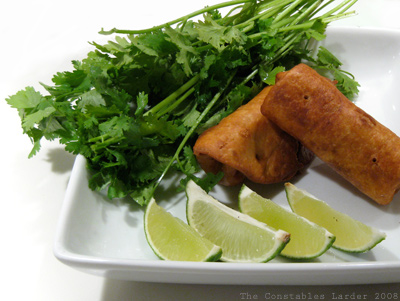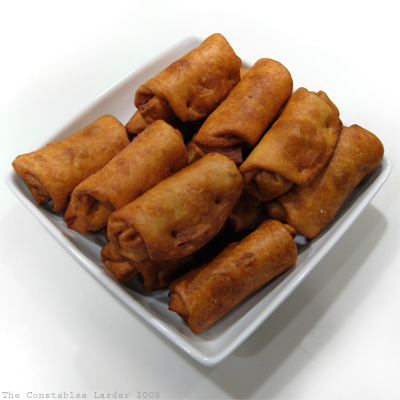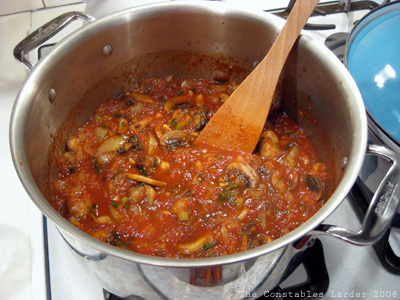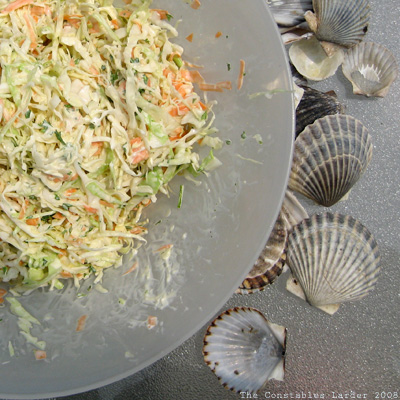
Tonight I decided to try an experiment of stuffed shrimp, bacon and cheese tortilla rolls. The following amounts made about 12 rolls.
40 medium-sized shrimp (cleaned and de-veined)
6 strips of thickly cut bacon
2 shallots
two handfuls of fresh cilantro
1/3 pound of monterey jack or cheddar cheese
2 limes
Black pepper
12 flour tortillas (6″ in diameter)
Canola Oil
Wooden toothpicks
1. In a large frying pan, cook your bacon until it is cooked but not yet crispy. Remove to a plate with a piece of paper towel to soak up excess grease.
2. In the bacon fat and while the pan is still quite hot, saute your shrimp cooking both sides for a minute or two until the shrimp loses its translucency. Remove from pan, loosely chop, and place in a medium bowl.
3. Finely chop the shallots and saute in the bacon fat on low heat for a couple minutes until they start to turn translucent. Remove and add to bowl (pour out any extra bacon fat that comes with the shallots). Then chop up your bacon and add to bowl.
4. Loosely chop up your cilantro (can never have too much fresh cilantro in my opinion) and add to bowl. Chop your cheese into small cubes (1/4 inch) and add to bowl. Finally add a touch of freshly ground pepper and the juice of a lime, and mix all the ingredients together.
5. Before you create your rolls, you want to warm up the tortillas so that they don’t split during the rolling process. At burrito shops, I have seen them use a kind of steamer, but at home I just warm them one at a time in a medium sized frying pan big enough to hold the 6″ tortilla, on low heat.
6. Take a warmed tortilla, and add a couple spoonfuls of the mixture to the bottom third. Fold over the bottom, then fold in the two sides, then continue the rolling process with the sides tucked in. Try to keep it fairly tight, and once you have complete the roll process, keep the shape in place with two wooden toothpicks (the toothpicks are essential, or the rolls will unravel when you cook them – in the bottom picture you can see the holes where the toothpicks went).
7. In a medium saucepan, heat up about an inch or two of canola oil until very hot. Add your tortilla rolls in batches and cook until they turn golden brown. Remove the tortillas with a slotted spoon or pair of tongs, and place on paper towel to pick up excess oil.
8. Remove the toothpicks and serve with slices of fresh lime
Notes: The next time I try this, I want to try to get my hands on some Chinese spring roll wrappers which would be thinner than the tortillas (which have the advantage of being available in most supermarkets). You can also experiment with creating a dipping sauce — I can imagine continuing in the lime/cilantro vein or going in a sour cream/yogurt direction. Lastly, the next time I do it, I might try not chopping ingredients as much but rather layering them more neatly in the rolls (thin strips of bacon and cheese, for example, and leaving the shrimp whole).







